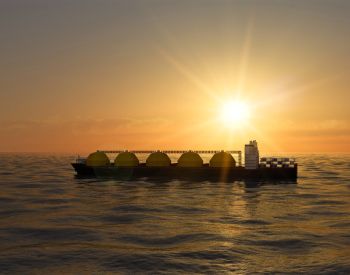Client
Ørsted (formerly DONG Energy)
Assets
Offshore wind turbines
Results
Accurately predicting Sound Exposure Levels within +/-1 dB of measured hydrophone data
This study was performed by Vysus’ Engineering Dynamics team
Client Challenge
Ørsted, a leader in wind power, faced a changing legislative landscape. The growing demand for sustainable energy, and subsequent increase in offshore wind turbine numbers, had led to underwater noise limits being written into national legislation. In Germany, for example, regulations now included explicit limits and a comprehensive set of mandatory measurement procedures.
Being able to stay within noise limits was fundamental for our client, who wanted to install new turbines. Reported measurement results showed that, for unmitigated driving of large diameter piles, limits were often exceeded. This introduced challenges and uncertainties in the installation process. A leap in the understanding of underwater noise emission was needed, and an accurate new prediction tool.
How we helped
We wanted our client to be able to predict noise levels in absolute terms, based on technical input at specific sites rather than empirical data. Our solution combined two, well-established techniques.
- Wave equation analysis for piles (WEAP), a popular geotechnical tool
- Vibro-acoustic Finite Element (FE) modelling.
WEAP offered two important uses for our client. It represented both the complex pile-soil interaction and the multi-component hammer systems common to offshore piling, so we could calculate the dynamics or stress wave caused. Our proposed method relied on WEAP for estimating the related energy dissipation and the loading to the pile head. By inputting these estimations into a relatively simple FE model, we had a new way to predict noise levels ahead of installation.
Powerful results
To validate the new WEAP-FE method, we tested it against empirical data from two experimental cases. The outcome in both cases was extremely positive, as outlined below. Predicting underwater noise emission has taken a leap forward with this new method. We are now remarkably close to full-scale, real-world measurements. The project’s results will help to further develop precise noise prediction tools and improve mitigation techniques.
Within +/-2 dB
The first case documented the results from a comprehensive measurement campaign at Anholt Offshore Wind Farm, Denmark. Here, the piling involved a steel monopile in a conical design with varying wall thickness, driven by a hydraulic hammer. No cushion element was applied. The comparison between the measured hydrophone data and the computed results revealed an impressive agreement, within +/-2 dB for the Sound Exposure Level (SEL).
Within +/-1 dB
The second case used measurement data from an experimental setup of harbour piling at the Vashon Island ferry terminal, US. The cylindrical steel piles had a length of 31.9m, an outer diameter of 0.76m, and were driven by a diesel hammer. No cushion element was applied. Again, the results in frequency domain were impressive. They showed a remarkable agreement in overall SEL of around +/-1 dB between the computed results and measured hydrophone data.
Related Services

